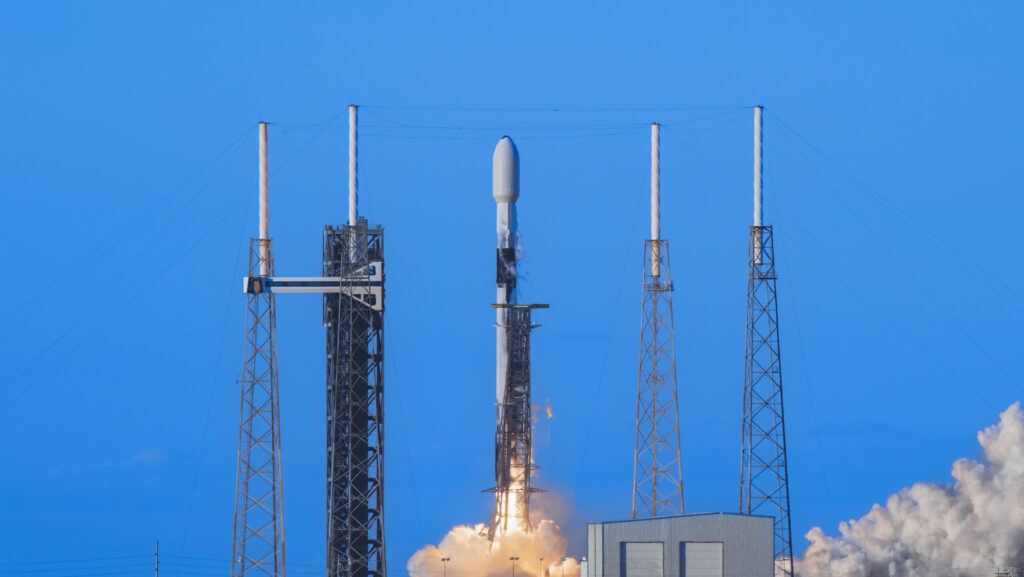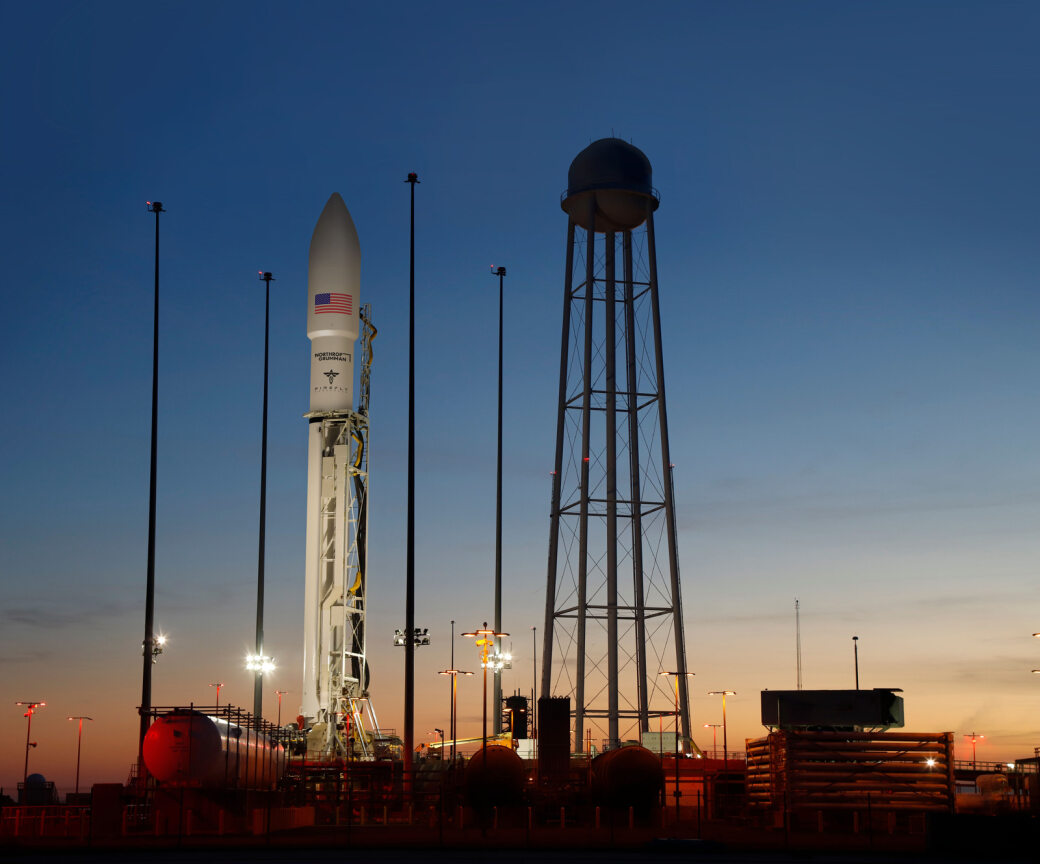
The Missile Defense Agency (MDA) and Space Development Agency (SDA) confirmed the successful launch of six satellites to low-Earth orbit from Space Launch Complex 40 at Cape Canaveral Space by SpaceX’s Falcon 9 rocket. (Missile Defense Agency)
WASHINGTON — A SpaceX Falcon 9 rocket on Wednesday successfully lofted six Defense Department demonstration satellites to low Earth orbit for tracking both ballistic and hypersonic missiles — four for the Space Development Agency (SDA) and two for the Missile Defense Agency (MDA), the agencies confirmed today.
The SDA satellites were developed by L3Harris and are equipped with wide field-of-view infrared sensors as part of the agency’s Tranche 0 iteration of test satellites for it planned Tracking Layer constellation. The L3Harris birds will complete the Tranche 0 constellation of eight satellites. The other four were developed by SpaceX, with both firms contracted by SDA back in 2020.
The agency eventually intends to orbit about 100 missile tracking satellites in LEO, as part of its overarching Proliferated Warfighter Space Architecture — a network of constellations that also includes data relay satellites designed to serve as the backbone of the Pentagon’s Joint All Domain Command and Control capability.
The MDA satellites carry the Hypersonic and Ballistic Tracking Space Sensor (HBTSS), a medium field-of-view infrared camera.
Wide field-of-view cameras sweep large swathes of the skies for incoming missiles so they can cover more potential launches, whereas medium field-of-view cameras can cover less volume of space but can provide higher resolution images and better see dim hypersonic missiles.
There has been some concern in Congress and among outside experts that SDA and MDA have not been coordinating as closely as they should on the development of fire-control capable infrared sensors, especially regarding those that will be needed in future by MDA’s new Glide Phase Interceptor. This is because the fully operational versions of SDA’s Tracking Layer satellites to provide global coverage will not carry the HBTSS, rather sensors of the agency’s own design.
Pentagon officials, however, beg to differ.
“Launching our Tracking satellites into the same orbit with the MDA HBTSS satellites is a win for both agencies,” Derek Tournear, SDA direct, said in a pre-launch press release. “We’ll be able to look at test targets from the same orbit at the same time, so that we can see how the two sensors work together. In Tranche 1, SDA will fly both sensor types as an operational system — medium-field-of-view demonstrating fire control, based on HBTSS design, and wide-field-of-view doing warning and tracking, based on T0 tracking design.”
An SDA official, speaking on Wednesday to reporters on background, explained that HBTSS “will be a part of” the agency’s next set of satellites launching in 2025: Tranche 1 which will be the first operational birds providing regional coverage.
“Then in Tranche 2, we have several HBTSS-inspired designs and other new capabilities as well. So what MDA has done with HBTSS is crossed ‘the valley of death,’ as we say, and enabled SDA to move forward and deliver missile defense capability to support [combatant commanders] worldwide,” the official added.
In their announcement today, the agencies said that “launch of the two prototype systems will be followed by two years of on-orbit testing.”












